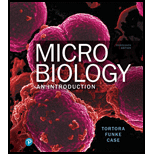
Concept explainers
Briefly describe the components of DNA, and explain its functional relationship to RNA and protein.
To review:
The components of DNA and its functional relationship to RNA and protein.
Introduction:
Deoxyribonucleic acid (DNA) is a molecule that carries the genetic information from one generation to the next. DNA is said to be the functional unit in all living organisms. The genetic information is stored as a code.
Explanation of Solution
Deoxyribonucleic acid is made up of four different deoxyribo nucleotides. They are deoxyadenosine triphosphate (dATP), deoxyguanosine triphosphate (dGTP), deoxycytosine triphosphate (dCTP), and deoxythymidine triphosphate (dTTP). Each deoxyribonucleotide is formed by the combination of four different nitrogenous base, deoxyribose and phosphates. They form the back bone of DNA with the phosphate group. The four chemical bases of DNA are adenine (A), guanine (G), cytosine (C), and thymine (T).
DNA is transcribed into mRNA (messenger RNA) and the mRNA sequence contains a number of codons. These codons are recognized by anti-codon region of t-RNA for the synthesis of proteins in the rough endoplasmic reticulum by adding amino acids. Later, the newly synthesized proteins undergo posttranslational modifications in order to become active functional proteins. Thus, the protein structure and their functions are decided by the DNA and RNA.
DNA is the hereditary material in almost all living organisms. In an organism, each cell has the same amount of DNA. Mostly DNA is located within the nucleus and it is called as the nuclear DNA. The small amount of DNA is present in mitochondria and it is called as the mitochondrial DNA.
Want to see more full solutions like this?
Chapter 8 Solutions
Microbiology: An Introduction (13th Edition)
Additional Science Textbook Solutions
SEELEY'S ANATOMY+PHYSIOLOGY
Campbell Essential Biology (7th Edition)
HUMAN ANATOMY
Microbiology Fundamentals: A Clinical Approach
Human Physiology: An Integrated Approach (8th Edition)
- Explain in a small summary how: What genetic information can be obtained from a Punnet square? What genetic information cannot be determined from a Punnet square? Why might a Punnet Square be beneficial to understanding genetics/inheritance?arrow_forwardIn a small summary write down:arrow_forwardNot part of a graded assignment, from a past midtermarrow_forward
- Noggin mutation: The mouse, one of the phenotypic consequences of Noggin mutationis mispatterning of the spinal cord, in the posterior region of the mouse embryo, suchthat in the hindlimb region the more ventral fates are lost, and the dorsal Pax3 domain isexpanded. (this experiment is not in the lectures).a. Hypothesis for why: What would be your hypothesis for why the ventral fatesare lost and dorsal fates expanded? Include in your answer the words notochord,BMP, SHH and either (or both of) surface ectoderm or lateral plate mesodermarrow_forwardNot part of a graded assignment, from a past midtermarrow_forwardNot part of a graded assignment, from a past midtermarrow_forward
 Concepts of BiologyBiologyISBN:9781938168116Author:Samantha Fowler, Rebecca Roush, James WisePublisher:OpenStax College
Concepts of BiologyBiologyISBN:9781938168116Author:Samantha Fowler, Rebecca Roush, James WisePublisher:OpenStax College Biology (MindTap Course List)BiologyISBN:9781337392938Author:Eldra Solomon, Charles Martin, Diana W. Martin, Linda R. BergPublisher:Cengage Learning
Biology (MindTap Course List)BiologyISBN:9781337392938Author:Eldra Solomon, Charles Martin, Diana W. Martin, Linda R. BergPublisher:Cengage Learning Human Biology (MindTap Course List)BiologyISBN:9781305112100Author:Cecie Starr, Beverly McMillanPublisher:Cengage Learning
Human Biology (MindTap Course List)BiologyISBN:9781305112100Author:Cecie Starr, Beverly McMillanPublisher:Cengage Learning Human Heredity: Principles and Issues (MindTap Co...BiologyISBN:9781305251052Author:Michael CummingsPublisher:Cengage Learning
Human Heredity: Principles and Issues (MindTap Co...BiologyISBN:9781305251052Author:Michael CummingsPublisher:Cengage Learning Biology: The Dynamic Science (MindTap Course List)BiologyISBN:9781305389892Author:Peter J. Russell, Paul E. Hertz, Beverly McMillanPublisher:Cengage Learning
Biology: The Dynamic Science (MindTap Course List)BiologyISBN:9781305389892Author:Peter J. Russell, Paul E. Hertz, Beverly McMillanPublisher:Cengage Learning





